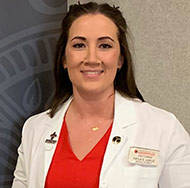Research and the Effect of Gun Violence on My Local Community
 The Louisville metropolitan area is known for many things, such as the Kentucky Derby, bourbon, great food and — unfortunately — gun violence. In 2022 alone, Louisville had 160 homicides due to gun violence, and 421 nonfatal shootings1. The community is hurting due to the sheer amount of violence, and the hospitals are weary of seeing all of this, with nothing seeming to change.
The Louisville metropolitan area is known for many things, such as the Kentucky Derby, bourbon, great food and — unfortunately — gun violence. In 2022 alone, Louisville had 160 homicides due to gun violence, and 421 nonfatal shootings1. The community is hurting due to the sheer amount of violence, and the hospitals are weary of seeing all of this, with nothing seeming to change.
At the University of Louisville radiology department, it may seem quiet at times, being situated in the basement, but significant events have been unfolding. In just one year, a team comprised of attending physicians, residents and medical students was developed to tackle the burden caused by the uptick of gun violence within my local community. The idea for this collaboration came from Henderson Jones, MD, JD, the lead resident in charge, with the assistance of his attending, Jonathon Josi, MD. The purpose behind this initiative was to expose medical students to research, leadership, radiology and a little bit of trauma.
Keith Miller, MD, a board-certified trauma surgeon, provided the radiology department with a registry of gunshot wounds that were combed through. The radiology team analyzed the imaging of five years’ worth of gunshot trauma cases and worked to grade various lacerations. Along with getting to work with residents in learning a bit about the reading process, several outcomes were discovered regarding the injuries. In the orbital injury series, it was found that there was a 20.6% mortality rate, and 32.4% of these injuries were self-inflicted, which gave us some common presentations to make physicians aware2. The team found that pancreatic injuries are rare but have a high fatality rate, and post-operative imaging was more appropriate, due to the urgent need for surgical intervention for stabilization3. It was also discovered that when grading lung injuries, the American Association for the Surgery of Trauma lung injury scale was non-exhaustive and difficult to apply, given how the imaging was interpreted4. This may mean the scale needs to be adjusted or there needs to be a more uniform way of documenting findings on imaging. Follow-up of this research should be aimed around educating physicians and medical students about how to improve processes to better care for patients.
To disseminate our findings, we prepared numerous posters and oral presentations. Of the 17 poster presentations stemming from our original collaboration, 13 were derived from this single trauma registry. The team’s work has benefited numerous individuals: the radiologists reading trauma cases, the trauma surgeons performing these lifesaving operations, and, most importantly, the patients in my local community who have been affected by gun violence.
With the unprecedented amount of gun violence that has occurred, we hope to continue to collaborate with Dr. Miller to further demonstrate to lawmakers the necessity of making policy changes aimed at reducing gun violence. With the help of UofL Health-Trauma Institute, the surgery department, Christopher 2X Game Changers and the School of Medicine, a program called Future Healers was formed in 2021 that works toward addressing the public health crisis of gun violence affecting our youth5. The goal is to introduce youth to the field of medicine while simultaneously supporting them as they work through the emotional trauma that comes from living in a community that is plagued with such violence. Christopher 2X is a major advocate for peace and justice in our community, and works with youth through education on nonviolence, with the goal of ending gun violence long term. These strong advocates and organizations have been instrumental in gaining momentum toward researching such a devasting public health crisis. Communities work best when they are working toward a common goal, and this research clearly displays the need to reduce the effects of gun violence in Louisville.
With our upcoming research projects, we have decided to further our collaboration efforts. In addition to incorporating additional physicians and expanding the scope of our research, we plan to start recruiting first-year medical students to provide them early exposure to research. Mentorship and research have become increasingly important, and this project has the benefit of exposing medical students to the struggles of their new, local community. Through this project and many others, the University of Louisville radiology department has recognized the importance of community outreach and research, and has taken steps to ensure that our efforts benefit the community in which we live and work. We hope that other institutions follow the same path as this initiative has significantly benefited our local community.
References
- WLKY News Staff. Louisville closes year with decrease in gun violence. WLKY News. Published Dec. 30, 2022. Accessed April 26, 2023. https://www.wlky.com/article/louisville-closes-year-decrease-gun-violence/42370881
- Hill, J.C., et al. Gunshot Wounds: Characteristics of Orbital Injuries. Poster presented at: Research! Louisville; September 2022; Louisville.
- Dodd , B.T., et al. Pancreatic Gunshot Wounds in Louisville, Kentucky- Classification of Imaging, Management, and Outcomes. Poster presented at: Research! Louisville; September 2022; Louisville
- Gaines, G.M., et al. Lung Gunshot Wounds — Characterization of Management, Imaging, & Outcomes
- https://uoflhealth.org/future-healers/
ACR Resources
- Digest of Council Actions — See H.3., Public Health and Radiation Protection, Deaths and Injuries Related to Firearms as a Major Public Health Concern, pg. 31, Res. 57.